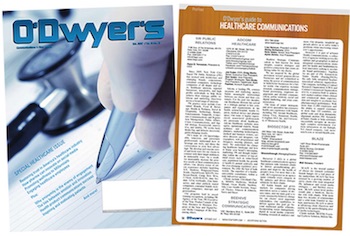|
|
People are troubled by the anger and violence demonstrated in recent events such as the Charlottesville protests and the Barcelona terrorist van assault on pedestrians. Attacking “other” people, the “anonymous,” seems alarmingly prevalent in today’s society, whatever the motivation or desired outcome.
Anonymity doesn’t always lead to attacks and violence. It’s easy to text $10 to Red Cross hurricane relief when we don’t know anyone in Houston or Florida, but it’s tough to engage personally and emotionally with people who are suffering.
|
|
Historically, certain racial groups were “anonymous,” and in recent years the anonymous have begun to include the poor, homeless, addicted or mentally ill as well. Perhaps we want to engage with these groups — and many of us hear that call to action from the pulpit on Sunday — but the mere idea of engagement is much easier than actually engaging on a personal level. When people are anonymous to us, they can be ignored, feared or pitied, or even attacked.
Charlottesville and Barcelona are extreme examples of this trend, yet the healthcare system in America has its own tendency to make people anonymous. We talk about “population health” instead of the health of individuals, “patients” and “volume” instead of people, “covered lives” instead of humans and FTEs instead of nurses and caregivers.
Health plans talk about “members” and refer to people by numbers, and it often seems like personal circumstances and human judgment are removed from the equation. Anonymity means we can just follow process, ignore personal circumstances and lump people together in convenient groups: demographically, geographically and economically.
The truth we all know, deep in our hearts and souls, is that we treat people differently when we know them — what they like and don’t like, what they care about and how we engage with them. “Anonymous” is the enemy of engagement.
We may not feel that we can affect the direction of the country, or the presidency or our society. Yet we have unusual influence in our role as healthcare marketers, because healthcare marketing is responsible for connecting with the entire community we serve. That may be a hospital’s community, or a community of people who suffer from the same disease or condition, or a community of caregivers we seek to inspire and support. Healthcare marketing can appeal to the “angels of our better nature,” helping people to see how they can live better, more productive, healthier lives.
So, if “anonymous” is the enemy of engagement, how do we engage? The answer may be different depending on the type of healthcare organization, but there are opportunities whether you work in a hospital, health plan, HIT company, or life sciences company.
We are uniquely positioned to engage with people — individuals — not only at moments of great joy and sadness, but all the moments that matter in between. Even B2B engagement can be done at the human level, not in a “sea of sameness” where all companies sound the same as they address their prospective customers in impersonal ways. We can be leaders in moving past “anonymous” to engagement.
Engagement requires a certain mindset, but it can also be enabled by technology. CRM and marketing automation technology provides unparalleled opportunities to engage with people on an individual level, and a variety of digital data feeds give us insights into preferences, likes, dislikes, and priorities.
Social media channels provide an opportunity to communicate with people one-on-one, rather than serving as just another advertising channel, and people can opt-in to certain types of information. Unique, personalized URLs and calls-to-action in every marketing campaign element allow us to capture feedback, preferences, and interests. Mass advertising may have its place, but it does not engage — targeted, personalized, digital communication engage. These new approaches work well in B2B, B2C, B2P and across all other acronyms.
You may read some of these suggestions and think: How did this conversation shift from the benevolent desire to engage to a commercial exercise? In healthcare, we can do both simultaneously. When we meet people where they are, when we seek to know them and their interests, when we provide them useful information and valuable content, that’s when we move people from “anonymous” to engaged. The irony is, that’s also when we also derive business value. We do well by doing good, which is not something that happens in every industry. We’re blessed to have this opportunity.
We can decide to break the antiquated legacy of healthcare marketing communication to really engage with people, to know them, to connect with them on a personal level. And that will benefit your organization and the healthcare system as a whole. It may even change the country, in some small way.
***
Brandon Edwards is CEO of ReviveHealth.

 Brandon Edwards
Brandon Edwards

 Lo Isidro, senior director at Real Chemistry with more than a decade of strategic communications and PA experience, has joined Narrative Strategies.
Lo Isidro, senior director at Real Chemistry with more than a decade of strategic communications and PA experience, has joined Narrative Strategies. Nelson Fernandez, former North American chair of APCO Worldwide and managing director of Burson-Marsteller, has joined Volunteers in Medicine Berkshires as director of communications and PA.
Nelson Fernandez, former North American chair of APCO Worldwide and managing director of Burson-Marsteller, has joined Volunteers in Medicine Berkshires as director of communications and PA. Lilit Bargar, who was most recently an EVP in the healthcare practice at Weber Shandwick, comes on board at GCI Health as EVP, corporate practice lead.
Lilit Bargar, who was most recently an EVP in the healthcare practice at Weber Shandwick, comes on board at GCI Health as EVP, corporate practice lead.
 Five ways that successful thought leaders are made.
Five ways that successful thought leaders are made.


 Have a comment? Send it to
Have a comment? Send it to 
No comments have been submitted for this story yet.